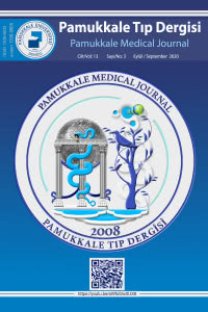Letter to Editor Hemodialysis for the Treatment of Isoniazid Intoxication
Hemodialysis for the Treatment of Isoniazid Intoxication To the Editor, We recently read with great interest the manuscript entitled “Secondary shoulder dislocation and fracture due to acute isoniazid intoxication”. The authors presented the treatment of a life-threatening condition, intractable seizures, metabolic acidosis with high anion gap related to Isoniazid (INH) intoxication (1). High doses of INH are associated with metabolic acidosis, intractable convulsions, rhabdomyolysis, lactic acidosis, shock, decreased level of consciousness, coma, and even may cause death if not appropriately treated (1). Thus, its early and proper treatment is very important (2). In this case report, it was stated that the authors have performed a very successful treatment of isoniasid induced loss of consciousness and metabolic acidosis. It has been seen that the patient has ingested a dose of 1200 mg of INH before admission. It has been seen from the case that; the authors has treated the patient succesfully with midazolam and they have stopped the seizure in this way. It is well known that; pyridoxine is the one of the best treatment options in the treatment of INH intoxication. And this case is a perfect sample of this treatment method. But, because of the little molecular weight and hydophilic structre INH has a low distribution volume (0.6L/kg) (2). And INH reduces the levels of NAD that has a role in the transformation of lactate to piruvate. Lactate accumulates in the blood and acidosis and anion gap of the patient increases. Additionally INH decreases the activity of glutamic acid decarboxylase activity and due to the blockage of gamma amino butyric acid (GABA), convulsion can develop easily (2,3). This situation may cause drug resistant convulsions and coma (1,4). It could result with a life-threatening condition. Although in this patient, hemodialysis was not needed, hemodialysis is the alternative and effective treatment option in patients with refractory convulsions and comatose. Hemodialysis is not necessary in mild poisoning of INH but well effective in severe intoxication and it provides rapid clinical improvement in this situation. It removes INH which did not adhere to the activated charcoal and toxic metabolites of it from circulation (2,5). It should be kept in mind as an effective treatment option in severe INH intoxication by Emergency physicians.
Letter to Editor Hemodialysis for the Treatment of Isoniazid Intoxication
Hemodialysis for the Treatment of Isoniazid Intoxication To the Editor,We recently read with great interest the manuscript entitled “Secondary shoulder dislocation and fracture due to acute isoniazid intoxication”. The authors presented the treatment of a life-threatening condition, intractable seizures, metabolic acidosis with high anion gap related to Isoniazid (INH) intoxication (1).High doses of INH are associated with metabolic acidosis, intractable convulsions, rhabdomyolysis, lactic acidosis, shock, decreased level of consciousness, coma, and even may cause death if not appropriately treated (1). Thus, its early and proper treatment is very important (2). In this case report, it was stated that the authors have performed a very successful treatment of isoniasid induced loss of consciousness and metabolic acidosis. It has been seen that the patient has ingested a dose of 1200 mg of INH before admission. It has been seen from the case that; the authors has treated the patient succesfully with midazolam and they have stopped the seizure in this way. It is well known that; pyridoxine is the one of the best treatment options in the treatment of INH intoxication. And this case is a perfect sample of this treatment method. But, because of the little molecular weight and hydophilic structre INH has a low distribution volume (0.6L/kg) (2). And INH reduces the levels of NAD that has a role in the transformation of lactate to piruvate. Lactate accumulates in the blood and acidosis and anion gap of the patient increases. Additionally INH decreases the activity of glutamic acid decarboxylase activity and due to the blockage of gamma amino butyric acid (GABA), convulsion can develop easily (2,3). This situation may cause drug resistant convulsions and coma (1,4). It could result with a life-threatening condition. Although in this patient, hemodialysis was not needed, hemodialysis is the alternative and effective treatment option in patients with refractory convulsions and comatose. Hemodialysis is not necessary in mild poisoning of INH but well effective in severe intoxication and it provides rapid clinical improvement in this situation. It removes INH which did not adhere to the activated charcoal and toxic metabolites of it from circulation (2,5). It should be kept in mind as an effective treatment option in severe INH intoxication by Emergency physicians.
___
- References 1. Erdoğan A, Beden S, Erdoğan MA, Değerli V, Parlak İ. Secondary shoulder dislocation and fracture due to acute isoniazid intoxication. Pam Tıp Derg 2018;11(3);361-364. 2. Orak M, Üstündağ M Güloğlu C, Sayhan MB, Altuncı YA. Urgent Hemodialysis for the Treatment of Isoniazid Overdose. Israeli Journal of Emergency Medicine 2008;8 (1):39-43. 3. Coban EK, Dogan VB, Dirik A. A Cause of Status Epilepticus in Turkey: Isoniazide Intoxication. Dusunen Adam: The Journal of Psychiatry and Neurological Science; 2013; 26: 395-7. 4. Ozceker D, Haşlak F, Yetim A, Cıtak A, Baş F, Tamay Z. A bactericidal agent used with suicidal intent: isoniazid. Journal of the Child 2014; 14: 78-80. 5. Bruno GR, Carter WA.Toxicology and Pharmacology, Specific Agents In Overdose. In: Emergency Medicine. Tintinalli EJ, editor. New York: McGraw Hill; 2004: 1164.
